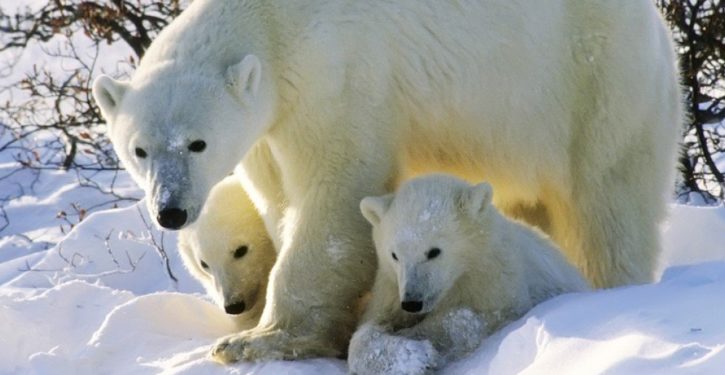
If the story, which ran in Thursday’s Washington Post, isn’t enough to persuade conservatives to begin worshiping at a the altar of Global Warmism, some Hollywood liberal will convert it into a horror film titled “Revenge of the Polar Bears.”
The source of the Post’s warning is a recently published study in the Wildlife Society Bulletin that looked at recorded polar bear attacks going back to 1870. The authors found “no trend” in the number of attacks by decade through 2014, which you’d think would count against the claim that bear attacks increase with less ice, but you’d think wrong. The report emphasizes that “nutritionally stressed adult male polar bears were the most likely to pose threats to human safety.”
The study claims “the greatest number of polar bear attacks occurred in the partial decade of 2010 — 2014, which was characterized by historically low summer sea ice extent and long ice-free periods.”
Will this presidential election be the most important in American history?
Polar bears rely on Arctic sea ice to hunt seals, so projections of shrinking sea ice coverage mean more bears could be forced inland. If that happens, there’s an increased chance starving polar bears will meet up with humans.
Study authors say this could increase the chances of humans becoming polar bear food.
“But a bear’s still got to eat,” Geoff York, a study co-author who works for the activist group Polar Bears International, told the Post. “They’re more likely to try new things, and sometimes, that might be us.”
So, should people worry about being eaten on their morning Arctic stroll? Veteran zoologist Susan Crockford argued the “data used in the paper are seriously skewed and in my opinion this totally invalidates the authors’ conclusions.”
Crockford, an expert on polar bears, wrote on her blog Polar Bear Science that the authors relied solely on modern accounts of polar bear attacks that completely ignore attacks on Inuits who lived in close proximity to the animals for centuries.
“How could any Arctic scholar not know that formerly-abundant Inuit inhabitants of North American and Greenland … traditionally hunted the same marine mammals as polar bears, using the same sea ice platforms as the bears? Many Inuit still do,” Crockford wrote Thursday.
Crockford also noted the paper tries to blame sea ice decline for polar bear attacks by ignoring “a biologically valid explanation for the apparent increase in hungry young male polar bears that have attacked people over the last few years.”
Crockford further maintained that there’s an “increased risk stemming from the larger proportion of adult males that now exist in protected populations,” adding:
Adult males frequently steal the kills of younger bears and in recovering (i.e. growing) populations, relatively more adult males potentially generate more young males that are nutritionally stressed and at risk of attacking humans.
This report, by Michael Bastasch, was cross-posted by arrangement with the Daily Caller News Foundation.




